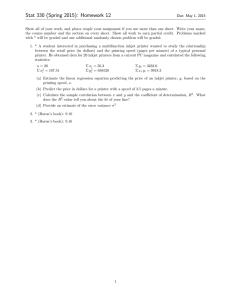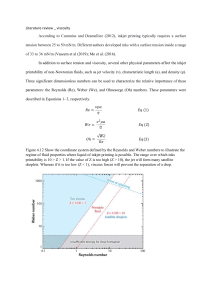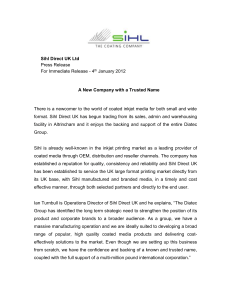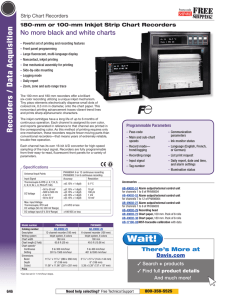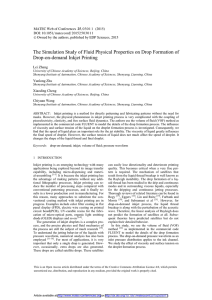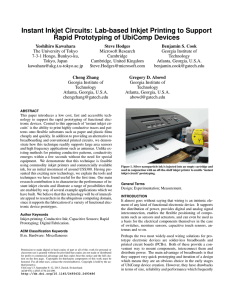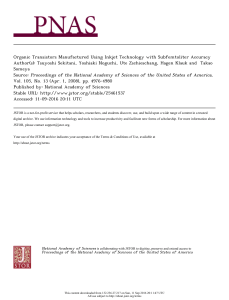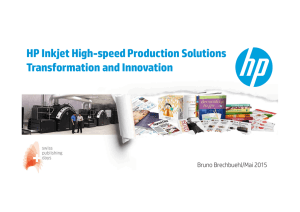Print yourself a spectrometer Page 1 of 2
advertisement
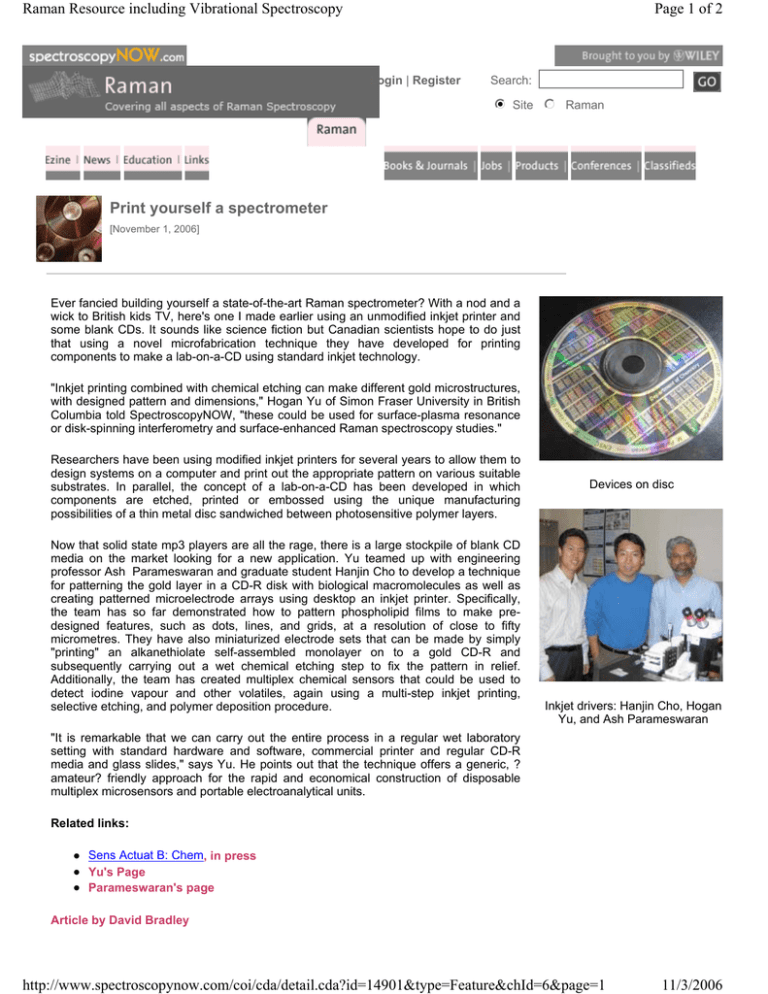
Raman Resource including Vibrational Spectroscopy Page 1 of 2 Login | Register Search: i Site n j k l m n j Raman k l m Print yourself a spectrometer [November 1, 2006] Ever fancied building yourself a state-of-the-art Raman spectrometer? With a nod and a wick to British kids TV, here's one I made earlier using an unmodified inkjet printer and some blank CDs. It sounds like science fiction but Canadian scientists hope to do just that using a novel microfabrication technique they have developed for printing components to make a lab-on-a-CD using standard inkjet technology. "Inkjet printing combined with chemical etching can make different gold microstructures, with designed pattern and dimensions," Hogan Yu of Simon Fraser University in British Columbia told SpectroscopyNOW, "these could be used for surface-plasma resonance or disk-spinning interferometry and surface-enhanced Raman spectroscopy studies." Researchers have been using modified inkjet printers for several years to allow them to design systems on a computer and print out the appropriate pattern on various suitable substrates. In parallel, the concept of a lab-on-a-CD has been developed in which components are etched, printed or embossed using the unique manufacturing possibilities of a thin metal disc sandwiched between photosensitive polymer layers. Now that solid state mp3 players are all the rage, there is a large stockpile of blank CD media on the market looking for a new application. Yu teamed up with engineering professor Ash Parameswaran and graduate student Hanjin Cho to develop a technique for patterning the gold layer in a CD-R disk with biological macromolecules as well as creating patterned microelectrode arrays using desktop an inkjet printer. Specifically, the team has so far demonstrated how to pattern phospholipid films to make predesigned features, such as dots, lines, and grids, at a resolution of close to fifty micrometres. They have also miniaturized electrode sets that can be made by simply "printing" an alkanethiolate self-assembled monolayer on to a gold CD-R and subsequently carrying out a wet chemical etching step to fix the pattern in relief. Additionally, the team has created multiplex chemical sensors that could be used to detect iodine vapour and other volatiles, again using a multi-step inkjet printing, selective etching, and polymer deposition procedure. Devices on disc Inkjet drivers: Hanjin Cho, Hogan Yu, and Ash Parameswaran "It is remarkable that we can carry out the entire process in a regular wet laboratory setting with standard hardware and software, commercial printer and regular CD-R media and glass slides," says Yu. He points out that the technique offers a generic, ? amateur? friendly approach for the rapid and economical construction of disposable multiplex microsensors and portable electroanalytical units. Related links: z z z Sens Actuat B: Chem, in press Yu's Page Parameswaran's page Article by David Bradley http://www.spectroscopynow.com/coi/cda/detail.cda?id=14901&type=Feature&chId=6&page=1 11/3/2006
